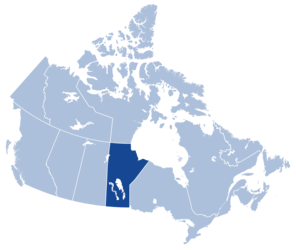Spill Regulations in Manitoba: What Businesses, Farms, and Industrial Sites Need to Know
November 20th 2025

Manitoba’s spill-control framework applies to agricultural producers, transportation fleets, industrial facilities, fuel-storage sites, and any operation that handles petroleum or hazardous products. This guide explains how the province regulates spills, what triggers mandatory reporting, and what expectations apply to storage tanks and containment systems. It is intended as a practical overview and should be used alongside the official provincial documents.
Read more about Provincial Spill Regulations Across Canada and find Spill Kits and Response Products
1. The Regulatory Foundation in Manitoba
Spill and petroleum-storage requirements are set out primarily under the Dangerous Goods Handling and Transportation Act and the Petroleum Storage and Handling Regulation (M.R. 188/2001). These documents define how tanks must be installed, operated, and maintained, and they outline the obligations for preventing, containing, and reporting spills.
Additional guidance, including Technical Bulletin PSF-001, clarifies how aboveground tanks should be managed during fuel transfer. Together, these rules form the framework that governs spill readiness across the province.
2. Spill Reporting in Manitoba
In Manitoba, spills must be reported immediately when they present a risk to people, property, or the environment. The province operates a 24-hour Emergency Response Line at 204-944-4888, and all significant releases must be directed there without delay.
Certain scenarios almost always require reporting. A common trigger is the release of 100 litres or more of a flammable liquid, but smaller volumes must still be reported if they migrate into waterways, roadside drainage, or soil where environmental impact is likely. Chemical spills that pose a health or ecological risk also fall under mandatory reporting, regardless of quantity. The province’s emphasis is not just on volume but on potential harm.
3. Requirements for Aboveground Storage Tanks
Manitoba sets clear expectations for the design and maintenance of aboveground fuel tanks. Tanks must meet ULC standards such as ULC-S601 or ULC-S653, and installations must follow approved procedures to prevent leaks. Facilities handling larger tanks may also require registration or site approval.
Secondary containment is a fundamental requirement. Manitoba expects containment to hold 110% of the volume of the largest tank in single-tank systems. For multi-tank setups, containment must hold the largest tank plus an additional 10% of the total combined capacity. This ensures that even catastrophic failures do not result in uncontrolled releases.
Technical Bulletin PSF-001 adds additional protection by requiring transfer pads for aboveground tanks of 5,000 litres or more. These pads are designed to manage spills during loading or unloading and to prevent runoff from reaching soil or drainage systems, especially during freeze-thaw cycles.
4. Preparedness Expectations for Manitoba Operations
Manitoba expects businesses to maintain the tools and procedures necessary for effective spill response. Sites are expected to:
- Store appropriate absorbents near spill points
- Maintain spill kits suited to handled materials
- Train staff for rapid response
- Keep records of inspections and maintenance
In practice, this means maintaining a functional system of prevention, containment, and response, rather than reacting after an incident.
5. Manitoba’s Industry Landscape and How It Shapes Spill Risk
Agriculture is a major factor. Many farms store fuel in aboveground tanks governed by provincial regulations. Extensive use of diesel, hydraulic fluids, fertilizers, and pesticides means both hydrocarbon and chemical spills are possible. Spring thaw increases spill mobility.
Transportation and trucking face mobile and stationary spill risks along highways and rail corridors. Cold-weather performance is essential.
Industrial and manufacturing sites handle hazardous materials, waste oils, coolants, and solvents. Indoor and outdoor readiness is required to contain leaks before they migrate.
Rail and bulk-transport operations require rapid and versatile response capabilities due to trackside and freight-yard layouts.
6. Where to Access the Official Manitoba Regulations
Operators can review complete regulatory details from Manitoba’s official sources:
Petroleum Storage Program
https://www.gov.mb.ca/sd/environment_and_biodiversity/petroleum_storage/index.htmlTechnical Bulletin PSF-001
https://www.manitoba.ca/sd/pubs/environmental-approvals/petroleum/technical_bulletin_psf-001_2018-08-24.pdfPetroleum Storage and Handling Regulation (M.R. 188/2001)
https://web2.gov.mb.ca/laws/regs/current/_pdf-regs.php?reg=188/2001%20
These documents offer the most direct and current details for tank installation, containment, and reporting obligations.
7. How Spill Supplies Supports Compliance in Manitoba
West Coast Spill Supplies supports operators by providing spill-response solutions suited to Manitoba conditions.
- Granular absorbents for outdoor work areas
- Sorbents, pads, rolls, socks, and booms for routine or emergency spills
- Spill kits tailored to agriculture, transportation, industrial, or mixed-use sites
For storage compliance, they provide:
- Engineered containment systems
- Berms, spill pallets/decks, drums
- Portable or drive-through containment systems
- Neutralizers, degreasers, leak-stop tools
- Custom hazmat response trailers for high-risk or remote operations
Regulatory Overview Summary
Manitoba’s spill regulations emphasize:
- Safe product storage
- Reliable containment
- Immediate reporting of harmful releases
Agriculture, transportation, and industrial sectors face different risks, but the core requirements remain: prevent spills, contain quickly, and meet reporting obligations. With the right containment systems and response tools, operators can maintain compliance year-round.
